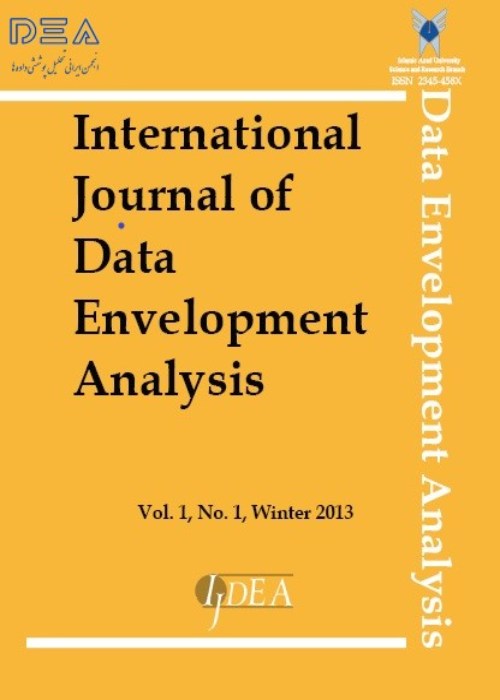فهرست مطالب
International Journal of Data Envelopment Analysis
Volume:2 Issue: 3, Jul 2014
- تاریخ انتشار: 1393/07/04
- تعداد عناوین: 6
-
Pages 409-421
The present study is an attempt toward evaluating the performance of portfolios using mean-variance-skewness model with negative data. Mean-variance non-linear framework and mean-variance-skewness non- linear framework had been proposed based on Data Envelopment Analysis, which the variance of the assets had been used as an input to the DEA and expected return and skewness were the output. Conventional DEA models assume non-negative values for inputs and outputs. However, we know that unlike return and skewness, variance is the only variable in the model that takes non-negative values. This paper focuses on the evaluation process of the portfolios in a mean-variance-skewness model with negative data. The problem consists of choosing an optimal set of assets in order to minimize the risk and maximize return and positive skewness. This method is illustrated by application in Iranian stock companies and extremely efficiencies are obtained via mean-variance-skewness non-linear framework with negative data for making the best portfolio. The finding could be used for constructing the best portfolio in stock companies, in various finance organization and public and private sector companies.
Keywords: portfolio, Data envelopment analysis (DEA), skewness, Efficiency, Negative data -
Pages 423-429
System designs, optimizing resource allocation to organization units, is still being considered as a complicated problem especially when there are multiple inputs and outputs related to a unit. The algorithm presented here will divide the frontiers obtained with DEA. In this way, we investigate a new approach for resource allocation.
Keywords: DEA, context-dependent, budget allocation, cost-efficiency, efficiency -
Pages 431-446
Bankruptcy in the same amount of time and history is very rampant and therefore the vision of the future can be prevented. Using data envelopment analysis (DEA) and malmquist index can precise evaluating of the performances of many different kinds of decision making units (DMU) such as hospitals, universities, business firms, etc. In this paper, we will modify directional distance formulation of DEA to assess bankruptcy with using malmquist index. This method is the most general non-radial directional distance model. The method measures worst relative efficiency within the interval of zero to one for various period times. Model locates worst performing DMUs and determines an inefficient frontier model simultaneously with decrease of output and increase of input. By using malmquist index we measure the productivity for various years .This study introduces a precise and comprehensive bankruptcy measure that could be used as an early warning system for bankruptcy assessment.
Keywords: Data Envelopment Analysis, Directional distance function, Bankruptcy, Productivity, Malmquist -
Pages 447-460
Data envelopment analysis (DEA) measures the relative efficiency of decision making units (DMUs) with multiple inputs and multiple outputs. DEA-based Malmquist productivity index measures the productivity change over time. We propose a dynamic DEA model involving network structure in each period within the framework a DEA. We have previously published the network DEA (NDEA) and the dynamic DEA (DDEA) models separately. Hence, this article is a composite of these two models. Vertically, we deal with multiple divisions connected by links of network structure within each period and, horizontally, we combine the network structure by means of cary-over activities between succeeding periods. We also introduce dynamic Malmquist index by which we can compare divisional performances over time
Keywords: Malmquist productivity index- DEA- network- overall efficiency -
Pages 461-472
Data Envelopment Analysis (DEA) models with interval inputs and outputs have been rarely discussed in DEA literature. This paper, using the enhanced Russell measurement proposes an extended model which permits the presence of interval scale variables which can take both negative and positive values. The model is compared with most well-known DEA models of which include the CCR model, the BCC model and the additive model. An empirical data set is used to illustrate the model.
Keywords: Data Envelopment Analysis, Decision making, Translation Invariance, interval scale, ratio scale -
Pages 473-479
The paper deals with Data Envelopment Analysis (DEA) and Artificial Neural Network (ANN). We believe that solving for the DEA efficiency measure, simultaneously with neural network model, provides a promising rich approach to optimal solution. In this paper, a new neural network model is used to estimate the inefficiency of DMUs in large datasets.
Keywords: Data envelopment analysis (DEA), Neural Networks


